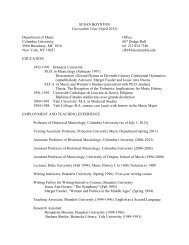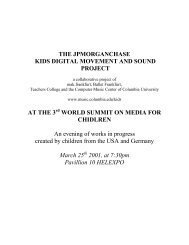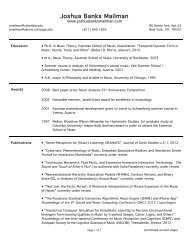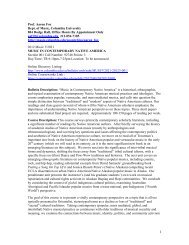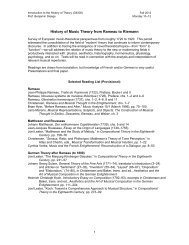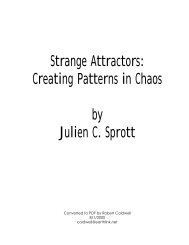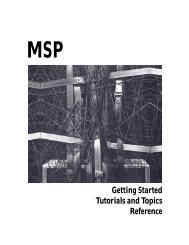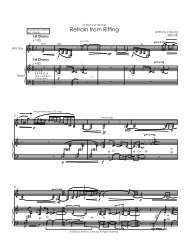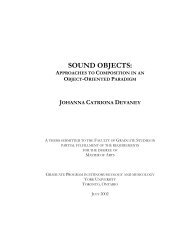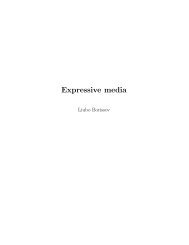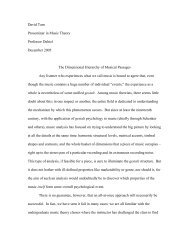Text, including the two scores - Columbia University Department of ...
Text, including the two scores - Columbia University Department of ...
Text, including the two scores - Columbia University Department of ...
Create successful ePaper yourself
Turn your PDF publications into a flip-book with our unique Google optimized e-Paper software.
28 (though <strong>the</strong> recent flood <strong>of</strong> 3D Hollywood has certainly dulled that unexpected<br />
<strong>of</strong> surprise). It adds <strong>the</strong> literal third dimension <strong>of</strong> spatialization, with its increased ability to convey complex shapes and data. From a more sociological perspective (narrowed by presenting it predominantly at performance spaces in Manhattan and Brooklyn), it has had <strong>the</strong> marked effect element<br />
dissipating social reservation (i.e. <strong>the</strong> level <strong>of</strong> posturing and pretense) in <strong>the</strong> crowd <strong>of</strong> art consumers. I've yet to investigate this by systematic questioning <strong>of</strong> individuals, but I plan to in <strong>the</strong> future. Is it a nostalgic regression to childhood? A license to engage an ar<strong>two</strong>rk non-intellectually? Mere novelty? Or, perhaps <strong>of</strong><br />
potentially damaging, is it merely that 3D glasses signify that you are about to experience entertainment instead <strong>of</strong> art? This audience effect thus can most<br />
<strong>two</strong> ways simultaneously: it makes people more excited and receptive, but perhaps less open to artistic engagement. The recent explosion <strong>of</strong> 3D Hollywood has <strong>of</strong> course worsened this separation between 3D and art; an anti-3D screed in <strong>the</strong> current issue <strong>of</strong> <strong>the</strong> New Yorker, while noticeably biased work<br />
overly focused on 3D kitsch at <strong>the</strong> expense <strong>of</strong> <strong>the</strong> artistic potential <strong>of</strong> 3D, none<strong>the</strong>less directly addresses <strong>the</strong> issue <strong>of</strong> illusion and interpretation from within our normal ‘artistic’ <strong>two</strong> dimensions: ‘Is that not, after all, how we have learned to read a painting since <strong>the</strong> time <strong>of</strong> Giotto? We know that perspective is a trick, and that a flat surface and<br />
for a denser and more far-reaching world, but it is an illusion <strong>of</strong> which art—in drawing and painting, in still photography, and in <strong>two</strong>-dimensional films—has availed itself with unstinting intelligence, relying on our instinct to decipher <strong>the</strong> code. What 3-D movies say to us is: You have been fooled. You were duped, all this time, into thinking that a window was a world. Only now will you get <strong>the</strong> real thing.’ [9] stands<br />
addition to <strong>the</strong> aes<strong>the</strong>tic concerns, <strong>the</strong>re are o<strong>the</strong>r drawbacks: viewers, especially after watching commercial 3D films, have heightened<br />
In



